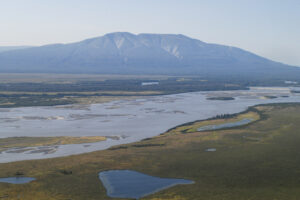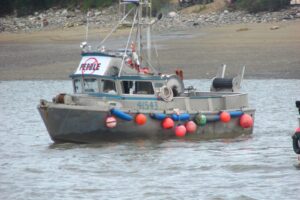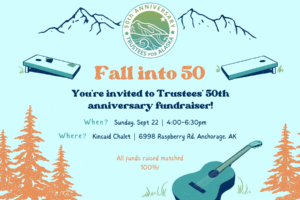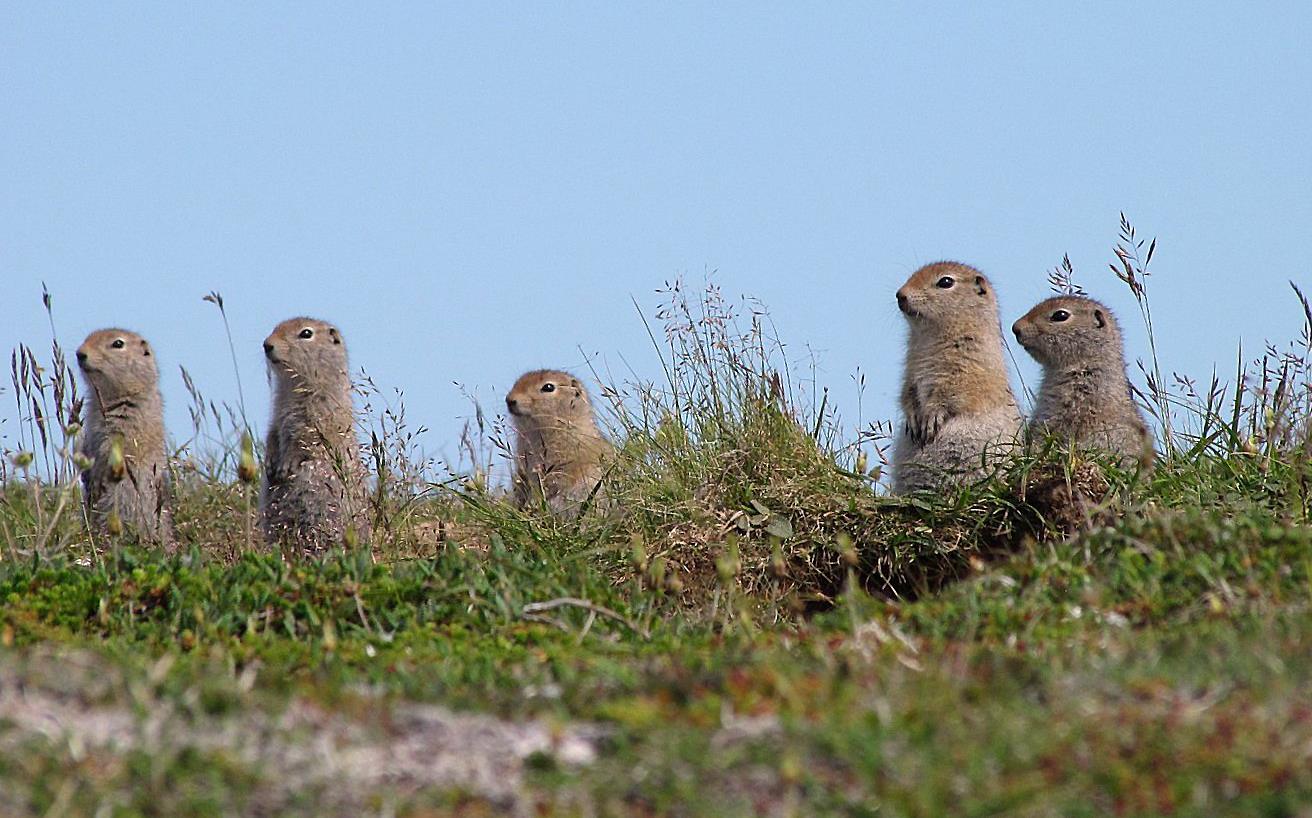
Jumping on the hamster wheel. Alaska News Brief August 2024
No matter what happens with the election, we at Trustees will be drinking from a firehose. If and how laws and policies regulate polluting industries, safeguard clean air and water, and protect lands and communities will demand legal action, no matter who gets elected.

Not hamsters, but Arctic ground squirrels in Togiak National Wildlife Refuge. They live underground in colonies and emerge or hibernate with the seasons. During hibernation, arctic ground squirrels adopt the lowest body temperature ever measured in a mammal. USFWS photo.
The U.S. Supreme Court has already changed decades-long precedents and will continue to do so. Those cases are already on the docket. Industry will keep pushing mining and oil and gas projects in the name of a vapid narrative that claims common good and necessity even as it evades, ignores, and takes no responsibility for the toxic aftermath. The colonial view of Alaska as a place to exploit rather than steward continues to rear its destructive and unsustainable head.
Even with a court win or good policy outcome, the projects and policies are often not over. We face them again with modifications or with the same old ways in a seemingly endless cycle.
It can feel like we’re on a hamster wheel sometimes. We go to court for months, years, even decades, and then we get a good ruling or policy win only to find ourselves back in the thick of it again over the same places and concerns—the Pebble mine proposal that would devastate Bristol Bay, the effort to drill on sacred lands in the Arctic National Wildlife Refuge, the many oil and gas proposals across an Arctic region grappling with devastating climate impacts, the slaughtering of wolves and bears on public lands. The list goes on.
Alaska is an amazing place we all love and enjoy. And also there are those who want to exploit it for as much money as can be made from oil, gas, gold, and more-than-human life.
This hamster wheel gets so exhausting that it’s hard to notice the muscles getting stronger. When living Groundhog’s Day again and again, it’s difficult to detect the shifts underway. The wheel turns and the day rolls into the next, and you often can’t see the difference. And also, our lives and the natural world exist within cycles—night into day, summer into fall, the astounding migrations of whales, birds, salmon, and caribou, and the spin and orbit of Earth and celestial bodies.
Truth is, many of us yearn for connection with these more-than-human beings and cycles because they remind us that we are part of nature, not apart from it. They bless us with belonging and wonderment, they show us how to move seamlessly, wisely so that we can sustain the whole of it.
For me, whales have always been the beings to whom I look for solace and wisdom. As I’ve said before, I love to swim with whales; it’s my happy place. Last March, when a sperm whale paused and considered me, just a foot away, I felt my heart slow as it soaked in the gift of her curiosity and grace. My mind became completely present as I floated within a field of awe.

Vicki and the whale–a still image from video.
That experience and others before it have taught me something important. The change that happens in and around us can be imperceptible, incremental. It can be little more than a shifting of perspective.
Here we are, humans inside human systems that are too often brutal and unfair, and that too often attempt to empower some people over all other beings. We are inside the overwhelm of our own technologies and endless cycles of news and notifications and alerts. We are trapped inside the speculative collective head spinning that comes with an overwhelm of information and misinformation that feeds a culture of distraction and reaction, and of anger, confusion, and fear rather than curiosity, consideration, connection.
I wonder, though, isn’t the prevalence of depression and anxiety telling us to take a step back and reconnect with other beings and each other? Isn’t the natural world—the world we are part of—telling us that our endless quest to extract and burn fossil fuels is not sustainable for living beings and our collective future? Aren’t our bodies and brains telling us that our tireless obsession over manipulated mass-communication devices erodes our agency and ability to make good decisions?
The human systems that divide and overload us feel chaotic. They drive us toward apathy rather than empathy. They compel us to put our heads in the sand or engage in battle rather than connect. They drive us to mistake groupthink and group bullying as belonging. They can make us feel so burdened that we can’t see the cage they have built around us.
When we talk about being on a “hamster wheel,” we mean the grind of the work, how it feels endless, even pointless. Yet running is what life asks of a hamster to find food, protection, social engagement. Running is the point. Remove the wheel and cage, and it’s not a grind but a life.
Just four years ago, prominent political people still denied climate change and some prominent conservationists still talked about the worthiness of a “majestic” wilderness as if barren of people. Not so much anymore.
How did these subtle changes happen? Small affiliations of people understood that running is the point. They understood that the grind meant doing the mindful, persistent work of change. What feels sometimes like Groundhog Day is the willingness to learn from experience and from the people who came before us and from those who live and perceive the world differently than us. They stuck with it and they, together, shifted how we think and talk about climate and the land.
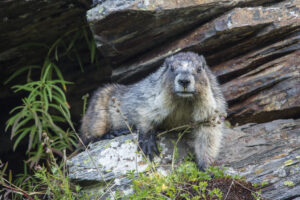
This is not a groundhog, but a hoary marmot. And we adore them. Photo by Jacob W Frank.
We’re not on a hamster wheel, we’re in our lives. For us at Trustees, that means going to court over and over on behalf of clients who cycle through legislative session after legislative session, comment period after comment period, legal motion after legal motion, grant report after grant report, year after year.
We all inevitably feel the weariness of these efforts. When I feel fatigued, I remember that the cycles are not part of the grind or Groundhog’s Day all over again, they are the purpose itself, and that I get to be a part of all of these collective efforts. I remember that it’s being before the gaze of a whale who carries a different knowledge and asks us to honor it.
Just as I will head to the ocean for as long as I can, I will keep working to protect places that nourish this abundance and connection.
And what a gift to do so with all of you—a profoundly dedicated staff and board, deeply committed clients and partners, and all of you big-hearted visionaries who make it possible because of your support, labor, and love.
See you on the hamster wheel!


PS. Thanks to supporters like you, we can continue fighting to protect Alaska’s land, water, air, wildlife and people.



